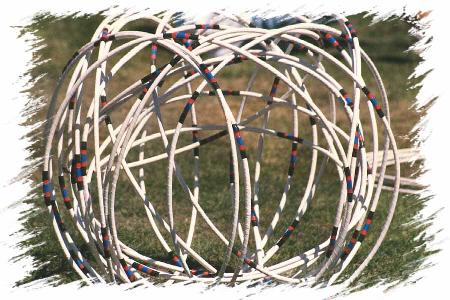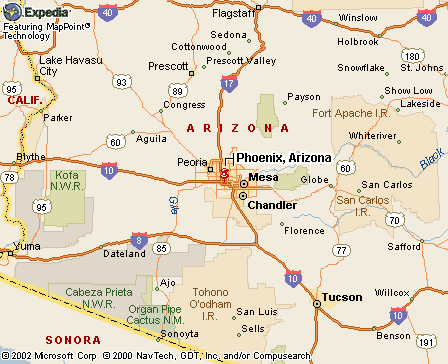|
|
Canku Ota |
|
|
(Many Paths) |
||
|
An Online Newsletter Celebrating Native America |
||
|
February 9, 2002 - Issue 54 |
||
|
|
||
|
Young Dancer Carries on Family's Hoop-Dance Tradition |
||
|
by Sadie Jo Smokey The
Arizona Republic Jan. 29, 2002
|
||
|
credits:{credits}
|
 Tony
Duncan was just a toddler when he began learning a family tradition -
the hoop dance. Tony
Duncan was just a toddler when he began learning a family tradition -
the hoop dance.
Today, the 18-year-old is so good at it that he'll be trying to bring home the world title at the Heard Museum's 12th annual World Championship Hoop Dance Contest. Hoop dancers from the United States and Canada will participate in this weekend's event. Some of the competitors include world champion Alex Wells of Alberta, Canada, and former world champions Derrick and Vincent Davies, brothers from Old Oraibi. Duncan, a member of the Apache/Arikara/Mandan/Hidatsa tribes, is a senior at Westwood High School in Mesa who is looking forward to track season, graduating in the spring and dancing in China this summer. He plans to attend community college and stay close to his dancing family, the Yellowbird Indian Dancers. His father, Ken Duncan, taught his seven children how to hoop dance. He says Tony knows some of the best moves around using "urban Indian hoops," which are made of PVC pipe. "He's always got a hoop in his hand, just twirling it around. That's how he gets good," Ken Duncan said. "He's got some original moves like 'Cowboy Riding a Pony' (that) we saw someone else do. That doesn't happen too often." QUESTION: What is a hoop dance? ANSWER: A Native American dance that shows athleticism, rhythm and timing with different hoops that show the circle of life. There's drumming and singing. When I'm out there, I'm mostly listening to the beat of the drum. Q: How did you begin hoop dancing? A: My dad taught me how to hoop dance when I was about 3 years old. You start with one hoop, go up to five hoops. Now I'm up to 18 to 30 hoops. I've been teaching my little brothers. Q: What's an easy move to teach someone? A: Jumping through a hoop, that's not too hard. It's like a jump rope, but you scrunch down and jump through. My little brothers (Skye, 5, and Talon, 3,) can do that. Q: What do you wear when dancing? A: My hoop dance regalia are sunset colors - purple, orange. I wear a ribbon shirt, breechcloth and moccasins. No headband. My mom knows family or friends who can make different things. Q: What moves, steps or stunts are you known for? A: I do a lot of one-hoop tricks. It sounds like it would be easier, but if you don't catch it, it will go out into the crowd. With more hoops, they stick together. Q: How big are your hoops? A: Mine are pretty thin like your index finger. It's not a hula-hoop. Mine are maybe 2 feet in diameter. I like mine to be a little bigger than my shoulders. I use electrical tape and cloth to decorate them. Q: Where in the world is your favorite place to dance? A: Italy. We danced with some other indigenous people, aborigines from Australia, Africa. During the summer we travel north and around the world. It's too hot here. Q: If you could change one thing about dancing, what would it be? A: When people in the audience make that hand-over-the-mouth, Hollywood "battle cry" or the "Braves" chant. It's ignorant. I like to dance so people can get educated.
|
|
|
||
|
|
||
| Canku Ota is a free Newsletter celebrating Native America, its traditions and accomplishments . We do not provide subscriber or visitor names to anyone. Some articles presented in Canku Ota may contain copyright material. We have received appropriate permissions for republishing any articles. Material appearing here is distributed without profit or monetary gain to those who have expressed an interest. This is in accordance with Title 17 U.S.C. section 107. | ||
|
Canku Ota is a copyright © 2000, 2001, 2002 of Vicki Lockard and Paul Barry. |
||
|
|
|
|
|
The "Canku Ota - A Newsletter Celebrating Native America" web site and its design is the |
||
|
Copyright © 1999, 2000, 2001, 2002 of Paul C. Barry. |
||
|
All Rights Reserved. |
||

